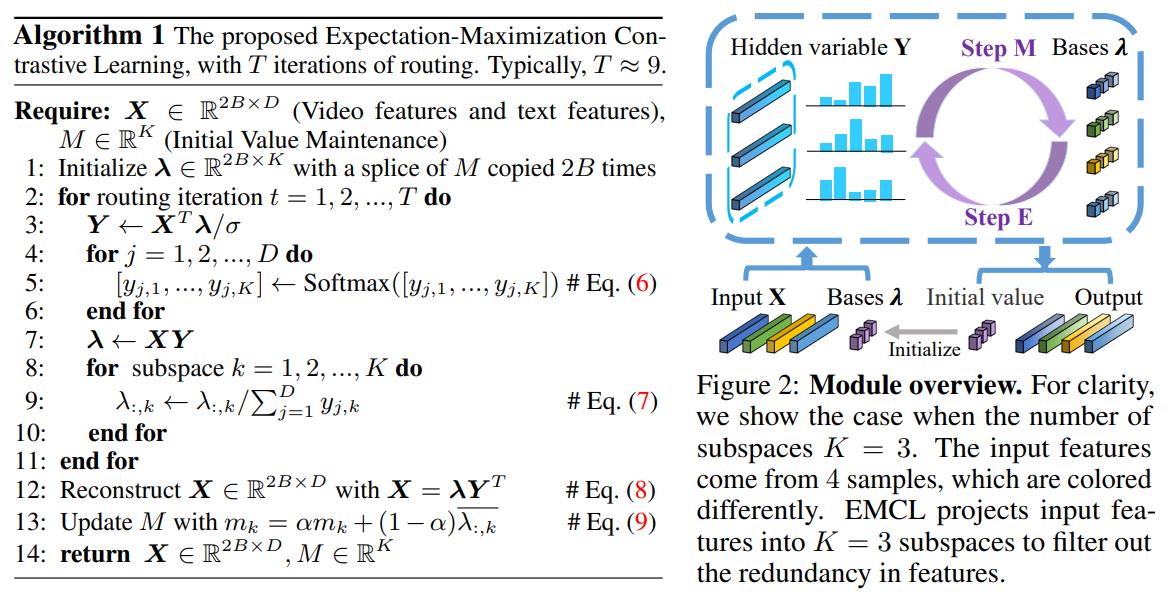The implementation of NeurIPS 2022 paper Expectation-Maximization Contrastive Learning for Compact Video-and-Language Representations.
- Jan 12 2023: Our approach achieves better performance (46.8 -> 48.2 on MSR-VTT dataset) when training with more GPUs (2 -> 8). So we recommend using more GPUs for better performance.
- Dec 14 2022: Add the code of EMCL-Net.
- Nov 21 2022: Release code for reimplementing the experiments in the paper.
-
The implementation of EMCL-Net (video_retrieval/EMCL-Net).
-
An example of using EMCL as a joint training module (video_retrieval/as_a_joint_training_module).
-
An example of using EMCL as an inference module with no extra training (video_retrieval/as_an_inference_module).
- The implementation of EMCL-QA (video_question_answering).
Most video-and-language representation learning approaches employ contrastive learning, e.g., CLIP, to project the video and text features into a common latent space according to the semantic similarities of text-video pairs. However, such learned shared latent spaces are not often optimal, and the modality gap between visual and textual representation can not be fully eliminated. In this paper, we propose Expectation-Maximization Contrastive Learning (EMCL) to learn compact video-and-language representations.
If you find our code helpful in your work, please consider citing:
@inproceedings{
jin2022expectationmaximization,
title={Expectation-Maximization Contrastive Learning for Compact Video-and-Language Representations},
author={Peng Jin and JinFa Huang and Fenglin Liu and Xian Wu and Shen Ge and Guoli Song and David A. Clifton and Jie Chen},
booktitle={Advances in Neural Information Processing Systems},
editor={Alice H. Oh and Alekh Agarwal and Danielle Belgrave and Kyunghyun Cho},
year={2022}
}
Our code is based on MMT, CLIP, CLIP4Clip, DRL and CLIP2Video. We sincerely appreciate for their contributions.


